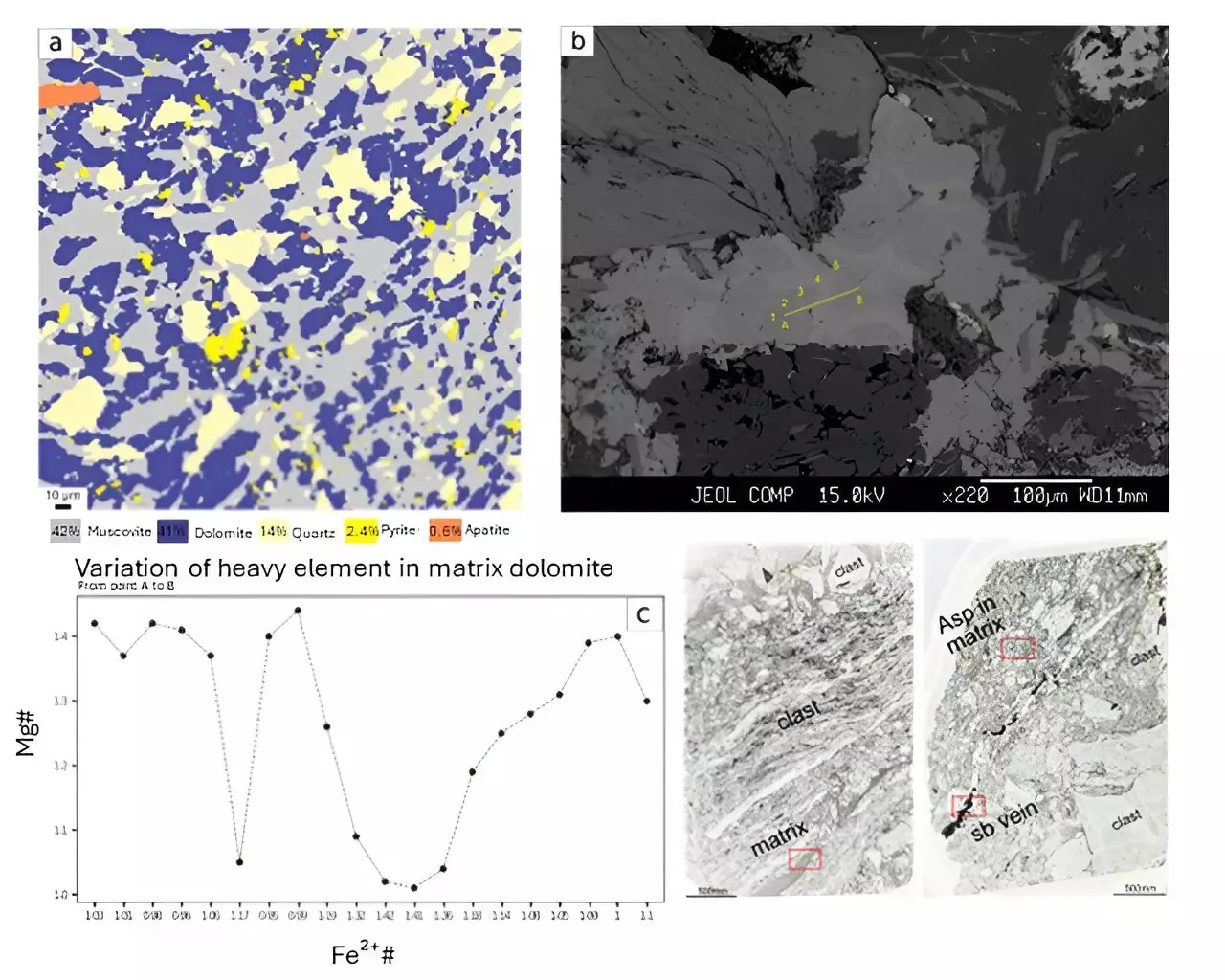In a research field trip to the Ichinokawa Mine in Ehime prefecture, Noriyoshi Tsuchiya made a groundbreaking discovery that shifted the focus from dazzling stibnite crystals to an unsung hero, breccia. Tsuchiya, a professor at the Graduate School of Environmental Studies, and the Hachinohe National College of Technology, found that the sedimentary rock bundle known as breccia held valuable clues about the seismic history of the region. While most would be captivated by the crystal formations, it was the unassuming breccia that stole the spotlight.
Exploring the Ichinokawa Breccia
Breccia, a fragmented rock formation, has the potential to reveal the earthquake activity that has shaped the landscape over time. The Ichinokawa breccia, in particular, stands out due to its ability to retain a record of the seismic events that occur along the Median Tectonic Line (MTL). This fault line, stretching approximately 1,000 kilometers along the southwest region of Japan, has experienced significant seismic activity, making the breccia formed in this area a subject of great interest for researchers.
Uncovering the Earthquake History
Through a meticulous assessment of the fragmented rocks in the field and laboratory, Tsuchiya and their team were able to extract valuable insights about past earthquakes. By examining thin slices of the rocks under a microscope, they were able to observe the angular deformation and powdery texture that provided clues about the energy dissipated during seismic events. The findings of their study, published in Scientific Reports on May 27, 2024, shed light on the intricate processes that shape the breccia formations.
One of the key revelations from the study was the successful estimation of the energy dissipated by past earthquakes. Through statistical and fractal analyses, Tsuchiya and their team were able to determine that the surface energy required to explain the distribution of fractured rocks was significantly higher than expected. This discovery challenged existing models of earthquake history, which primarily focused on hydrofracturing, and proposed a new model that considers a broader range of factors.
The discovery of carbonates in the breccia formations provided further evidence of the repeated seismic activity that had taken place in the region. By analyzing the unique pattern of fragmentation and pulverization in the breccia, Tsuchiya and their team were able to estimate that the Ichinokawa breccia were formed by multiple earthquakes with varying magnitudes. This not only deepened our understanding of the seismic history of the area but also opened up new avenues for research in earthquake dynamics.
The collaborative effort between Tsuchiya’s team, the National Institute of Technology, and Hachinohe College has the potential to reshape our understanding of coseismic energy budgets in earthquake-prone regions. By adopting a multi-disciplinary approach and considering a wide range of factors in their analysis, the study lays the groundwork for a more comprehensive model of earthquake history. This research not only highlights the importance of breccia in unraveling the Earth’s seismic past but also underscores the value of interdisciplinary collaboration in scientific discovery.


Leave a Reply